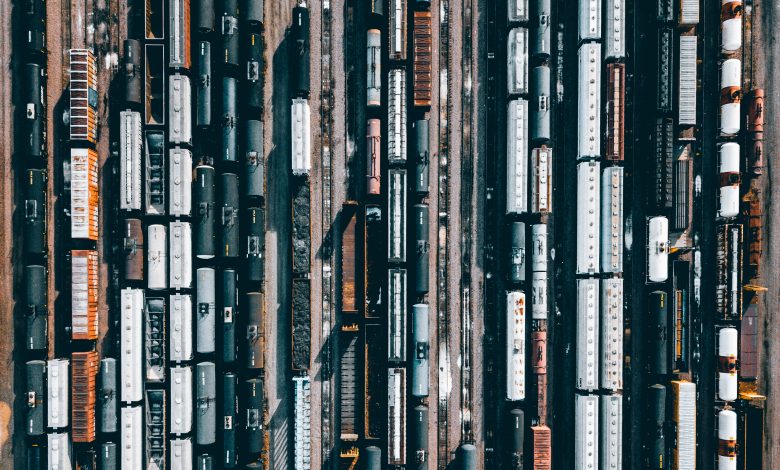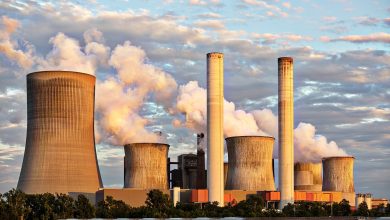LNG to Railways?

In October 2019, the Pipeline and Hazardous Materials Safety Administration (PHSMA) published a notice of proposed rulemaking that would add language to the Hazardous Materials Regulations (HMR) in order to allow liquefied natural gas (LNG) to be transported by rail. Currently, the HMR lists only highway or barge as appropriate methods to transport the energy source. The change was submitted in coordination with the Federal Railroad Administration. It is still in the comment stages; comments can be made on the Federal Register under Docket Number PHMSA-2019-0025 (HM-264).
The details
The Hazardous Materials Regulations include specifications for packaging that are listed on the Hazardous Material Table. LNG specs for bulk packaging are detailed on the table, along with cryogenic liquids. In its notice, PHSMA claims that LNG would be no different to transport than other cryogenic liquids that are authorized under the HMR.
As currently codified, LNG may be transported by rail only under the conditions of a special permit by the Pipeline and Hazardous Materials Safety Administration or in a portable tank approved by the Federal Railroad Administration. In general, bulk transport by rail cars is not permitted.
In its proposal, the PHSMA recognizes LNG’s significance as an energy resource, and that it is one that is continuously developing. Transporting the fuel via highway or port has satisfied demand up until its current status as an energy leader, writes the PHSMA in its proposal. In order to avoid interceding with industry innovation, the PHSMA purposes to allow LNG to be transported by the Department of Transportation tank model DOT-113. These tank cars are already moving cryogenic liquids, such as ethylene (which is derived from natural gas to make plastic).
The changes that address two pieces of the HMR packaging requirements are:
Allow DOT-113C120W tanks cars to move LNG – These are vacuum-insulated, stainless steel tanks with carbon-steel jackets designed for transporting refrigerated liquefied gases, such as liquid hydrogen, oxygen, ethylene, and nitrogen. They comply with federal regulation, as well as industry standards set by the Association of American Railroads in its manual of recommended practices. The PHSMA, though, notes that the DOT-113 tank cars will need to be manufactured, as the “current fleet” is already deployed with ethylene and different cryogenic liquids.
Amend the Pressure Control Valve Setting to include methane – Another measuring tool for moving hazardous material is the Pressure Control Valve Setting or Relief Valve Setting, which measures the maximum density of transportable gases by the maximum start-to-discharge (i.e. relief) pressure. The latter measurement is used to set pressure that is based on the design of a container and its ability to maintain pressure. The PHSMA, in adding methane to the list, claims the gas would be measured similarly to its counterparts (ethylene and hydrogen).
The challenger
This rule is being challenged by Democrat Peter DeFazio (Oregon) under H.R. 4306. DeFazio is the committee chairman for the U.S. House Transportation and Infrastructure. He is calling for a comprehensive review of railway transportation of LNG in the bill titled, “Protecting Communities from Liquefied Natural Gas Trains Act.” The House rule is still in its introductory phases, but it directs the Federal Railroad Administration to: 1) perform testing of the tank cars in order to understand the effects of an accident or impact and prevent or mitigate the release of LNG; 2) analyze the tank cars’ ability to withstand climate conditions; 3) prepare analysis for release scenarios, including derailments as well as front-end and rear-end collisions.
Leading to the change
The change follows a petition by the Association of American Railroads and the Trump administrations’ goals for energy independence. Though, the notice of proposed rulemaking is in direct response to a petition to act from the association. The move to put LNG on trains is not a new concept, but one that the industry has been toying with for a while. Safety concerns and other side effects of rail transportation have kept the conversation to the wayside, that is until Executive Order 13783 was signed.
The Center for Biological Diversity has responded to the proposed rule-making. The environmental group called to deny the petition the until the Environmental Impact Statement/Assesment could be conducted for public review.
Executive Order 13783: Promoting Energy and Economic Growth – On April 10, 2019, President Donald Trump ruled by Executive Order that energy policy in the United States will promote investment in various ways. In Section 4 of the Executive Order, the president challenged the Department of Transportation to create language within its regulations that would “treat LNG the same as other cryogenic liquids and permit LNG to be transported in approved rail tank cars.”
The Association of American Railroads – Every so often, the Association of American Railroads consults with rail industry experts to create and disperse guidance on topics relating to railroad transportation. From its information gathering, it generated a petition for rulemaking called the “Petition for Rulemaking to Allow Methane, Refrigerated Liquid to be Transported in Rail Tank Cars” requesting that LNG be transported by rail. In addition to its research for suggested tank car specifications, the organization claimed that the railroad is the safer mode of LNG transportation compared to highway travel. The proposed rule by the PHSMA is largely influenced by the suggestions made in this petition.
Special-permit holders in the U.S.
In 2016, the Alaskan Railroad Corporation became the first railroad in the United States to ship LNG. Because the U.S. does not have appropriate tankers available, the company is using containers from Vancouver. This started as a demonstration project to deliver cheap energy to Fairbanks, Alaska from Anchorage. Though the Interior Gas Utility Board of Directors in Alaska just terminated an agreement to increase LNG to Fairbanks due to issues with a third-party’s proposal, this is an issue the state is focused on.
One year later, the Florida East Coast Railway was approved to commercially move the gas from the Hialeah Rail Yard supply terminal in Medley to Port Miami to Port Everglades. By June 2018, the train had transported 148.7 million cubic feet of LNG to Port Everglades, where it was then bound for island populations such as Barbados.
Other information
Other countries are already transporting LNG through their lands this way. VTG Aktiengesellschaft, a German company, started moving more than 1,500 cubic meters of LNG per trip in 2015. Japan has also successfully transported the fuel by rail for many years.
Railway Age magazine, a publication established in 1856, claims that getting natural gas to “market overland at an attractive price is the issue” and encourages the allowance of bulk-transported LNG on railways. LNG can be compressed to 1/600th of the volume of its gas state, which could lower the price for energy to consumers (Blaze, 2019).
Sources
United States, Executive Office of the President Donald Trump. “Executive Order on Promoting Energy Infrastructure and Economic Growth”
Hazardous Materials: Liquefied Natural Gas by Rail, 84 FR 56964. Docket Number: PHMSA-2018-0025 (HM-264), proposed rule. 2019
Jim Blaze (2019). “Assessing LNG-By-Rail Safety” Railway Age
https://www.railwayage.com/regulatory/assessing-lng-by-rail-safety/
Dimitri Lascaris (2019). “As Resistance Halts Pipelines, LNG and Tar Sands Move via Rail” The Real News Network
https://therealnews.com/stories/resistance-halts-pipelines-lng-tar-sands-rail-train
Elwood Brehmer (2019). “Interior Alaska gas board ends work with Siemens on LNG rail delivery system” Anchorage Daily News
https://www.adn.com/business-economy/2019/04/11/interior-alaska-gas-board-ends-work-with-siemens/




